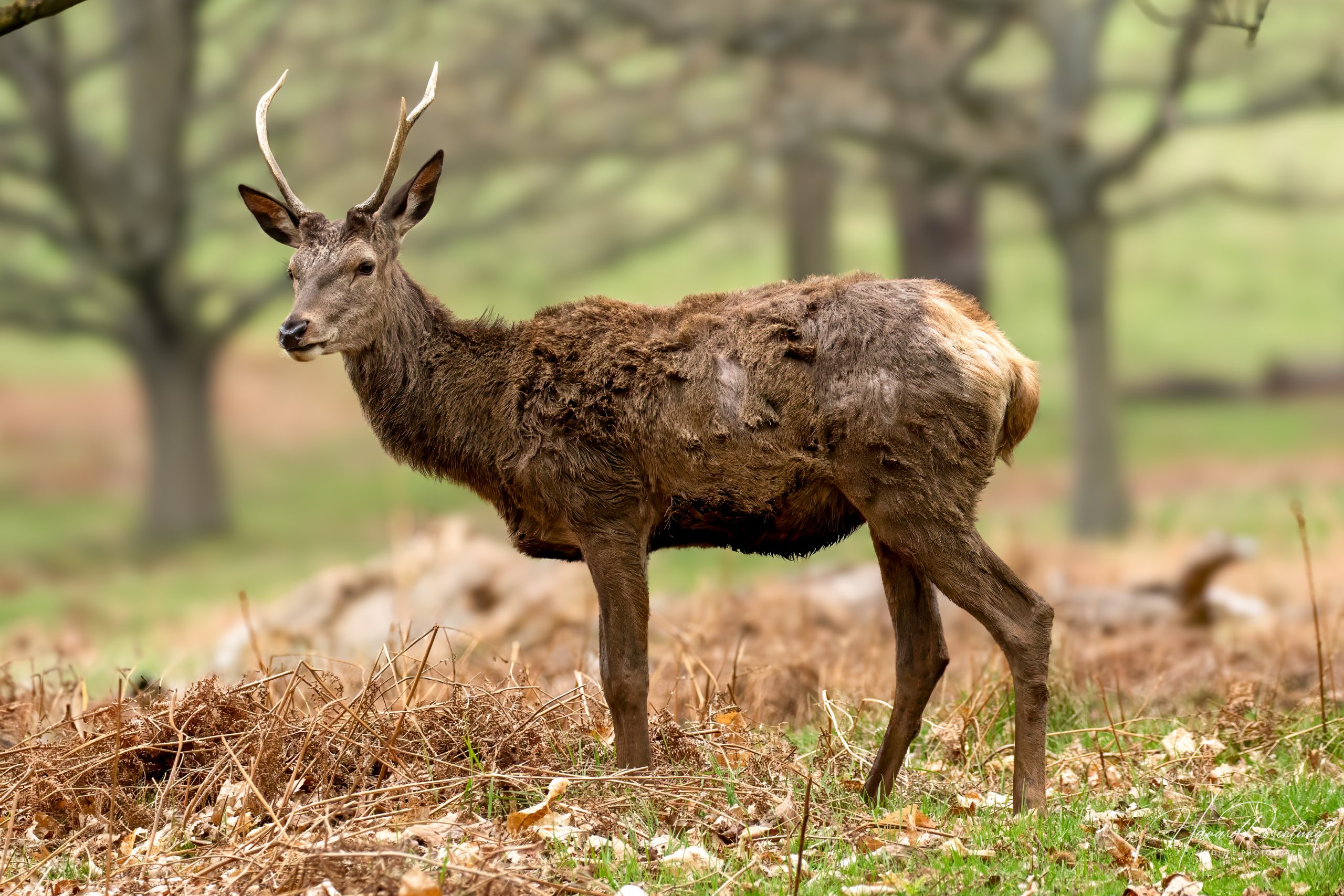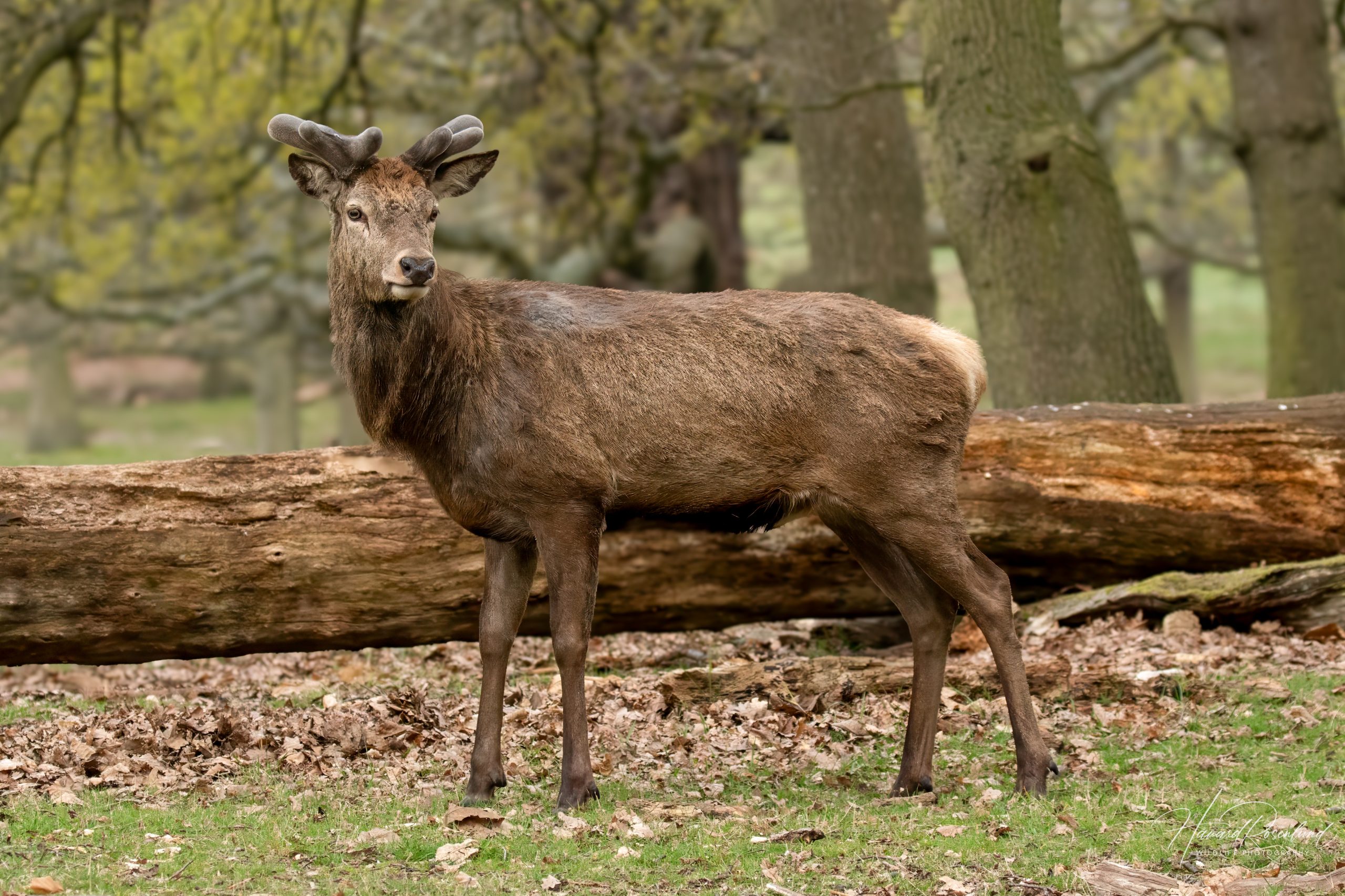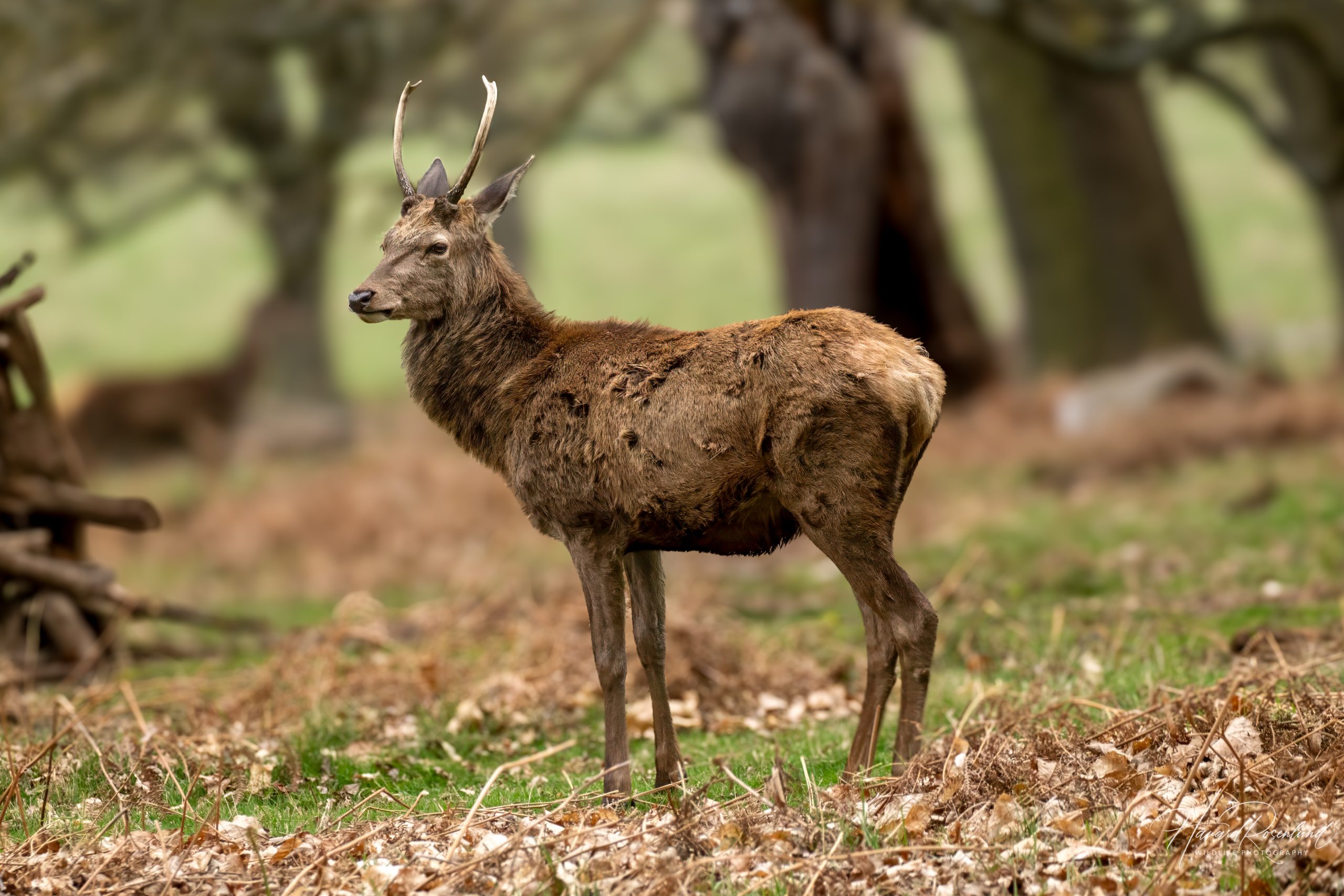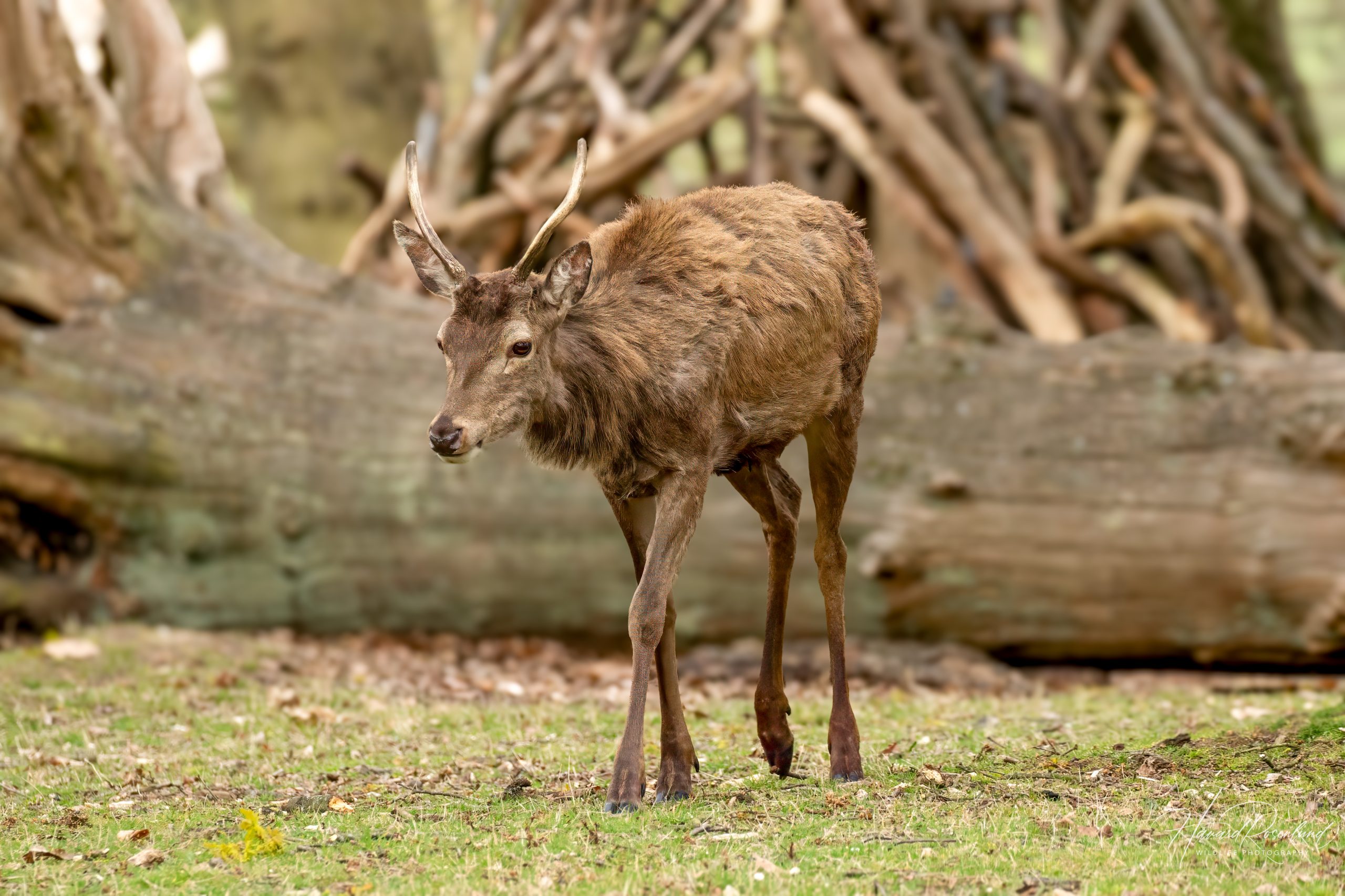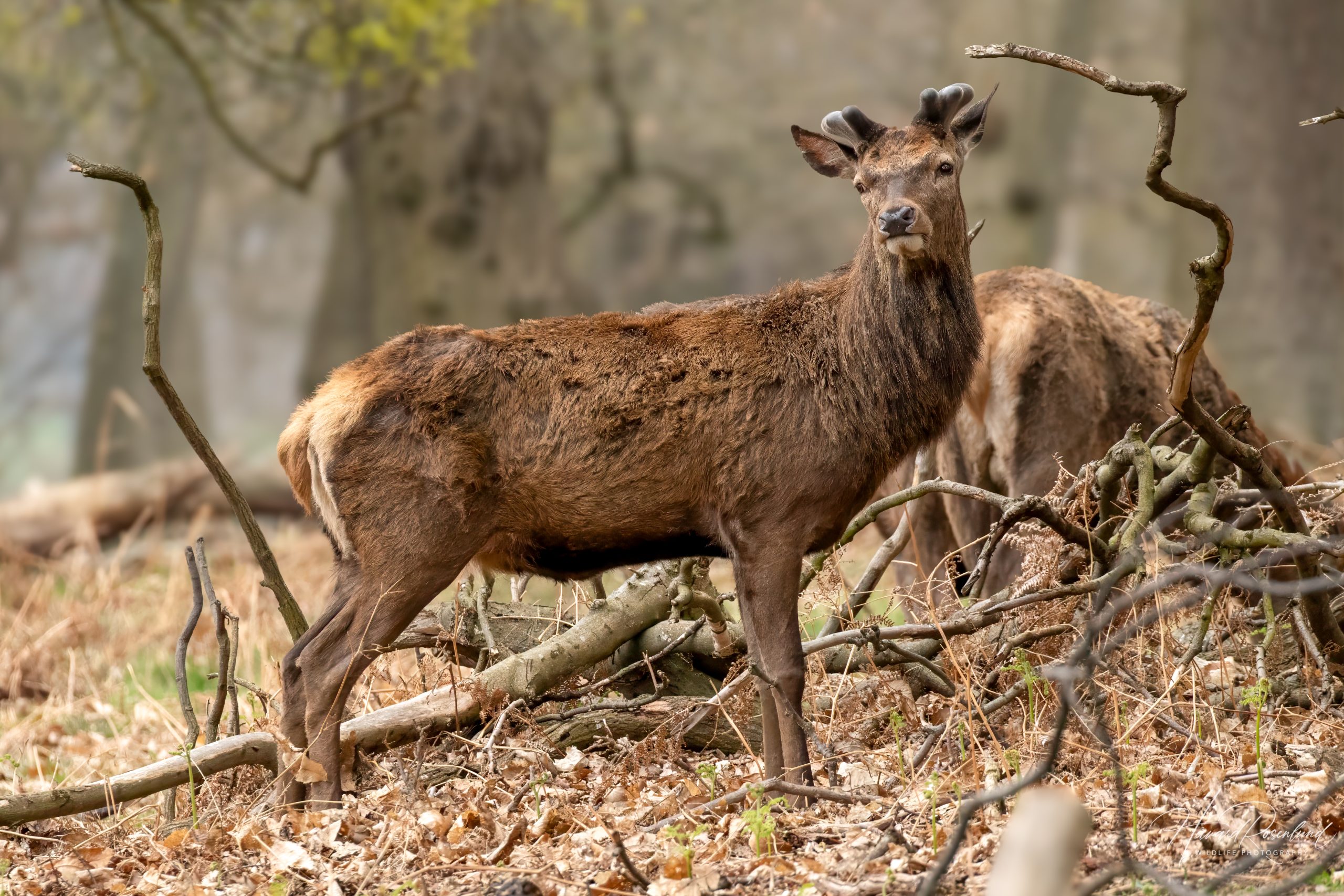Description
The red deer (Cervus elaphus) is one of the largest deer species, native to much of Europe, western Asia, and parts of North Africa. Males, known as stags, can weigh up to 240 kg (530 lbs) and stand about 1.2 meters (4 feet) at the shoulder, while females, called hinds, are smaller, typically weighing around 120 kg (260 lbs). The red deer is characterized by its reddish-brown coat, which turns a darker brown in winter, and large, branching antlers that are shed and regrown annually by the males. These antlers can span up to 1 meter (3 feet) in length and are used in combat during the rutting season. It is similar to the larger wapiti (Cervus canadensis) found in North America and East Asia, and the two were previously believed to be the same species due to fertile hybrids in captivity. Genetic studies have revealed them to be separate species.
Diet & habitat
Red deer are adaptable and occupy a range of habitats from forests and grasslands to mountainous regions. They are herbivores, primarily grazing on grasses, but their diet also includes leaves, twigs, bark, and herbs. In winter, when food is scarce, they may browse more extensively on shrubs and tree bark. Red deer have a ruminant digestive system, which allows them to efficiently process a variety of plant materials through fermentation in their multi-chambered stomach.
Behavior
Red deer are social animals, often forming groups called herds. These herds are typically segregated by sex for most of the year, with females and their young forming one group and males another. During the breeding season, known as the rut, males become highly territorial. Outside the rut, red deer are generally more docile and spend much of their time foraging. Unlike many other deer species, red deer have been known to swim across significant bodies of water to reach new habitats.
Reproduction
The breeding season for red deer occurs in the autumn, usually from September to November. During this time, stags compete for access to hinds through a combination of roaring, which serves to intimidate rivals and attract females, and physical battles involving their antlers. Once a stag has gathered a harem of females, he will mate with them during the rut. The gestation period for red deer is about 240 days, with hinds giving birth to a single calf, occasionally twins, in late spring or early summer. Calves are weaned at around 8 months but remain with their mothers for at least a year. Red deer can live up to 20 years in the wild, although they typically live 10 to 15 years.
Status
The red deer is currently listed as least concern on the IUCN Red List due to its widespread and abundant populations. However, certain local populations are threatened by habitat loss, poaching, and hybridization with other deer species, such as the sika deer (Cervus nippon) and wapiti. Red deer populations have been expanding in parts of Europe, including the United Kingdom, due to changes in land use, such as the abandonment of agricultural lands and reforestation efforts, which create favorable habitats for them.
The red deer has been introduced in other parts of the world, particularly New Zealand, Australia, Argentina, and Chile. As an invasive species they are considered as pests, due to the adverse effects they have on native ecosystems. Their populations are often culled and controlled in these countries.





